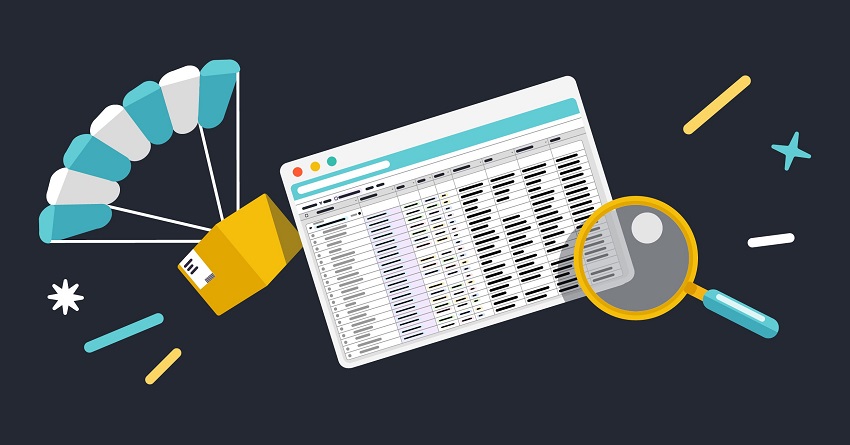In today’s digital age, entrepreneurs are constantly seeking innovative ways to start their own businesses and generate income. One strategy that has gained significant popularity is dropshipping. Dropshipping is a business model that allows entrepreneurs to sell products to customers without having to carry any inventory. This article will provide a comprehensive overview of the dropshipping strategy, its benefits, and how to get started. This content is presented by https://bsoinvest.com/
Introduction to Dropshipping
Dropshipping is a popular fulfillment method for many online retailers, as it allows them to offer a wide range of products without having to worry about inventory management or shipping logistics. However, as with any business model, there are both dropshipping problems and solutions to consider. One of the main challenges of dropshipping is finding reliable suppliers who can consistently deliver high-quality products to your customers. To overcome this, many successful dropshippers build strong relationships with their suppliers and communicate openly about their needs and expectations.
How Does Dropshipping Work?
The dropshipping process involves several key steps:
- Choosing a Niche: Select a niche market or product category to focus on. It’s essential to research and identify products that are in demand and have the potential for profitability.
- Finding Reliable Suppliers: Identify trustworthy suppliers who offer dropshipping services. Research different suppliers, compare prices, product quality, and shipping times to ensure a positive customer experience.
- Setting Up an Online Store: Create an online store using an e-commerce platform such as Shopify or WooCommerce. Customize the store’s design and layout to align with your brand image and target audience.
- Adding Products to Your Store: Browse the suppliers’ catalogs and select products to add to your store. Import product images, descriptions, and prices to create compelling product listings.
- Marketing and Driving Traffic: Implement marketing strategies to drive traffic to your online store. Utilize various channels such as social media marketing, content marketing, search engine optimization (SEO), and paid advertising to attract potential customers.
- Receiving Orders and Processing Payments: When a customer places an order on your online store, you receive the payment. Forward the order details to the supplier, including the customer’s shipping address and pay the wholesale price for the product.
- Supplier Handles Shipping: The supplier prepares and ships the product directly to the customer. You don’t have to worry about inventory storage, packaging, or shipment tracking.
- Customer Receives the Product: The customer receives the product directly from the supplier. Since the package does not contain any information about the supplier, it appears as if the product was shipped by your store.
Benefits of Dropshipping
Dropshipping offers several advantages for aspiring entrepreneurs:
1. Low Startup Costs
One of the most significant benefits of dropshipping is its low barrier to entry. Unlike traditional retail models that require substantial upfront investments in inventory, dropshipping allows entrepreneurs to start their businesses with minimal capital. The absence of inventory costs significantly reduces the financial risk associated with starting a new venture.
2. Flexibility and Location Independence
Dropshipping enables entrepreneurs to run their businesses from anywhere in the world as long as they have an internet connection. This flexibility allows individuals to travel, work remotely, and manage their business operations on their own terms.
3. Wide Product Selection
With dropshipping, entrepreneurs have access to an extensive range of products without having to purchase or store them physically. This vast selection allows entrepreneurs to test different niches and product categories to find profitable opportunities.
4. Scalability
Dropshipping businesses have the potential for rapid scalability. Since you don’t have to worry about inventory constraints, you can quickly expand your product offerings and scale your business as demand increases.
Getting Started with Dropshipping
To embark on your dropshipping journey, follow these steps:
Step 1: Research and Identify a Profitable Niche
Thoroughly research different niches and product categories to identify profitable opportunities. Consider factors such as market demand, competition, and profit margins.
Step 2: Find Reliable Suppliers
Identify reliable suppliers who offer dropshipping services. Look for suppliers with a good reputation, quality products, competitive prices, and efficient shipping processes.
Step 3: Set Up Your Online Store
Choose an e-commerce platform like Shopify or WooCommerce to set up your online store. Customize the store’s design, add essential pages such as product listings, about us, and contact information.
Step 4: Import Products and Optimize Listings
Import products from your chosen suppliers and optimize the product listings on your store. Write compelling descriptions, add high-quality images, and set competitive prices.
Step 5: Implement Marketing Strategies
Develop and execute marketing strategies to attract potential customers to your online store. Utilize social media platforms, content marketing, SEO techniques, and paid advertising to drive targeted traffic.
Step 6: Manage Orders and Customer Service
Monitor and manage incoming orders efficiently. Communicate with customers promptly, provide order updates, and handle any inquiries or issues with excellent customer service.
Step 7: Analyze and Optimize
Regularly analyze your store’s performance, including sales, customer feedback, and marketing campaigns. Use this data to make informed decisions and optimize your dropshipping business for growth.
Conclusion
Dropshipping provides entrepreneurs with an opportunity to start their own businesses with minimal upfront costs and inventory management. By leveraging the dropshipping strategy, aspiring entrepreneurs can focus on marketing, customer service, and growing their businesses without the burden of logistics. With careful research, reliable suppliers, and effective marketing strategies, dropshipping can be a lucrative venture for those willing to put in the effort.
FAQs
Q1: Is dropshipping a profitable business model?
A1: Dropshipping can be a profitable business model if executed correctly. It offers low startup costs, scalability, and flexibility, but success depends on thorough research, effective marketing, and selecting reliable suppliers.
Q2: Do I need to hold inventory in dropshipping?
A2: No, one of the key advantages of dropshipping is that you don’t need to hold inventory. The supplier handles inventory storage and shipping.
Q3: Can I sell products from multiple suppliers in my dropshipping store?
A3: Yes, you can sell products from multiple suppliers in your dropshipping store. However, it’s crucial to ensure that each supplier can deliver products reliably and within a reasonable time frame.
Q4: How do I find reliable dropshipping suppliers?
A4: Finding reliable dropshipping suppliers requires thorough research. Look for suppliers with positive reviews, quality products, competitive pricing, and efficient shipping processes. You can also consider attending trade shows or reaching out to manufacturers directly.
Q5: How can I market my dropshipping store effectively?
A5: To market your dropshipping store effectively, utilize a combination of social media marketing, content marketing, search engine optimization (SEO), and paid advertising. Tailor your strategies to your target audience and focus on building brand awareness and driving targeted traffic to your store.






